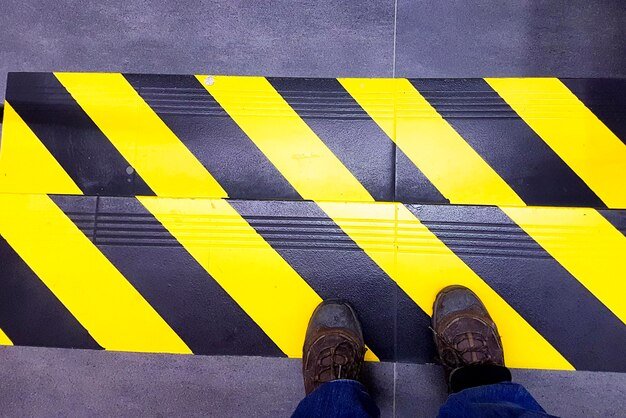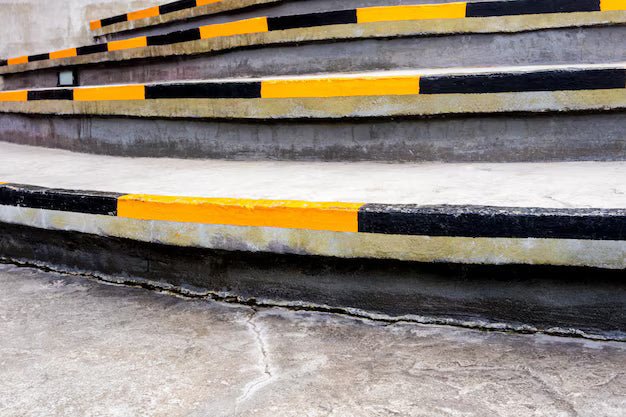Ramps can turn slippery fast, especially once the cold and wet weather settles in. Even gentle slopes become tricky when surfaces are damp or covered in leaves, mud or frost. Whether it’s a wooden garden ramp, a concrete loading slope or a metal surface near storage areas, traction loss is always a risk once autumn sets in.
Using anti slip grip tape is a straightforward way to improve stability without making major structural changes. It works across different ramp types and gives you better control with each step or wheel turn. We will walk through where it makes sense to apply grip tape, how to prepare the surface, and how to handle it when the harsher months arrive. A bit of planning now can help keep things safer all season.
Choosing the Right Areas for Grip Tape
Before grabbing the tape, look around and figure out where it will do the most good. Not all ramps are the same, and picking your focus spots makes the roll go further.
• Shaded or low-traffic ramps tend to hold moisture longer, which means these surfaces are often the first to get slippery
• Outdoor ramps near gardens, sheds or sloped walkways collect leaves and mud quickly, making them top spots for grip tape
• Indoor ramps, especially by loading bays or bin storage, stay drier but still face wear from wheels, shoes and regular traffic
It helps to stand back and think about how people move through the space. Is there a sharp turn partway down the ramp? Do people push trolleys or bins at an angle? Spot the places where someone might slow down, turn or carry weight, those are where tape matters most.
Slips Away’s anti slip grip tapes are available in several widths and lengths for easier fitting on wooden, concrete, or metal ramps. Options include photoluminescent for enhanced visibility in poor light, and strong waterproof adhesives make them suitable for year-round use.
Preparing the Surface for Application
Even the best tape cannot hold on properly if the ramp surface is not treated first. Before applying anything, the area needs to be clean, dry and as damage-free as possible.
• Give the whole ramp a good sweep to clear out leaves and small debris, then wash it down if it is coated with grime or algae
• Let it dry fully, as you do not want any moisture hiding under the tape or it may start lifting within days
• Check for soft wood, loose planks, peeling paint or cracks that could prevent smooth tape contact
Once everything feels firm and clean, lay the tape flat without peeling the back yet. This allows you to map out the placement in line with traffic flow. Consider whether strips need to run across the width or length of the ramp depending on how people use it.
Applying Anti Slip Grip Tape Correctly
Once the ramp is ready, applying the tape is simple if you take your time. Rushed work can mean air bubbles, misaligned strips or early peeling.
1. Start peeling the backing slowly as you press down a bit at a time, working from one end to the other
2. Use a firm roller or press with your palm to avoid creases and help the tape stick evenly
3. Trim any overhanging edges with a sharp blade so nothing catches shoes, trolleys or pushchairs
If the weather outside is too damp or freezing, wait for a dry patch so the adhesive has the best chance to bond. Cold tape on a cold surface often struggles to hold, so a bit of sunshine or mild air makes the job smoother.
Dealing With Autumn and Winter Conditions
Once leaves start to fall and the weather turns cold, ramps become even harder to keep steady. Surfaces feel different underfoot, and what is safe in the afternoon might not be after an early morning frost.
• Keep the taped ramp clear of leaves and grit, especially near corners where buildup gathers
• Use a soft broom or a light brush to clean the tape every now and then, helping keep the rough texture useful
• If you can, check it after heavy rain or hard frost to make sure nothing is lifting or chipping away
Light fades quickly this time of year. Grip tape with strong contrast can make steps and slopes easier to spot when the sun is low or when outside lights do not reach every corner. Tape blends into your routine during dry months, but it really shows its use once water or frost hits.
When to Replace or Reapply Grip Tape
Even good tape wears down over time. The trick is knowing when it is too far gone to keep doing its job. You do not always need a full redo, but spotting early wear can save someone from a stumble.
• If the top coating feels smooth when you step on it, the grip effect might be gone
• Watch for corners peeling or lines forming under the tape, which means water could be weakening the hold
• Faded colour or patchy spots are clues it has been worn down or sun-damaged
Make it a habit to check outdoor strips during the autumn clean-up. It is a good moment before the deepest part of winter catches people off guard. A small strip swap now helps ramps feel solid again, even with cold fog or icy wind around.
Safer Steps Through the Seasons
Anti slip grip tape gives extra control over surfaces that do not always stay dry or steady. It is quick to apply and flexible for many ramp types, making it one of the simplest ways to lower slip risks ahead of wet months.
Keeping tape in good shape, checking it once weather patterns shift, and replacing worn pieces sets up a steady path forward. No one enjoys a fall when carrying a bag or pushing something heavy. A few strips in the right spot, a proper clean beforehand, and caring enough to check on it through winter months can make hard surfaces much safer to cross, no matter what the weather brings.
At Slips Away, we know how important it is to have steady footing, especially when the colder months bring wet conditions and icy spots. If a ramp has been feeling unstable or worn out, adding or replacing an anti slip grip tape can make a noticeable difference. It is a small update that can help people feel more confident using walkways or access points each day. If you have seen signs of peeling, fading or smooth patches, it might be time to take a closer look. Give us a call and we will help you figure out the best way to make your ramp safer.














